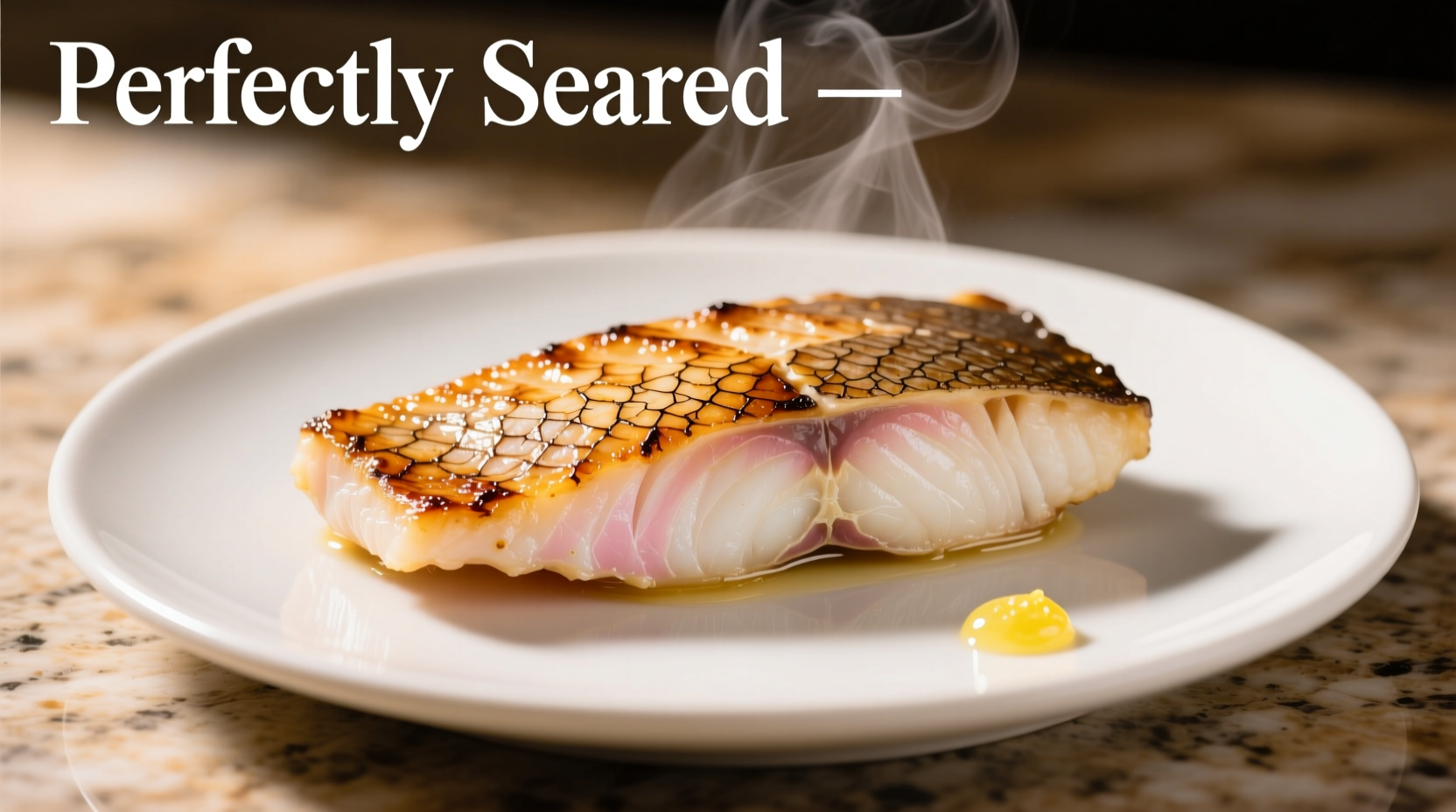The Essential Setup: Tools and Ingredients for Success
Before you start cooking, gather these essentials. Using the right equipment makes all the difference between a soggy disaster and perfectly seared cod.
| Must-Have | Why It Matters | Pro Tip |
|---|---|---|
| Heavy-bottomed skillet | Distributes heat evenly to prevent hot spots | Cast iron or stainless steel works best—avoid non-stick for optimal searing |
| Fresh cod fillets (1-1.5 inches thick) | Thicker cuts cook more evenly without drying out | Look for firm, translucent flesh with no fishy odor |
| High smoke-point oil | Prevents burning during high-heat searing | Use avocado oil (smoke point 520°F/270°C) or clarified butter |
Preparation: The Critical 10 Minutes You Can't Skip
Drying your cod properly is the single most important step many home cooks miss. According to the U.S. Food and Drug Administration, moisture on the surface of fish causes steaming instead of searing, leading to rubbery texture and sticking.
- Pat thoroughly dry with paper towels—both sides, for at least 2 minutes
- Salt 15-30 minutes ahead (this draws out excess moisture and seasons deeply)
- Bring to room temperature for 20 minutes before cooking (cold fish lowers pan temperature)
- Lightly coat with oil just before cooking (helps seasoning adhere)

The 3-Step Cooking Method That Never Fails
Professional chefs follow this exact sequence for flawless results. The timing varies slightly based on thickness, but the process remains consistent.
Step 1: Heat Control Is Everything
Heat your empty skillet over medium-high heat for 3-4 minutes until properly preheated. Test readiness by flicking a few water droplets into the pan—they should dance and evaporate instantly. Add oil and wait until it shimmers but doesn't smoke (about 375°F/190°C).
Step 2: The Golden 80-20 Rule
Place cod skin-side down (if skin-on) at a 45-degree angle away from you to prevent oil splatter. Do not move it for 80% of the cooking time. This allows proper searing and prevents sticking. For 1-inch thick fillets:
- First side: 6-7 minutes (skin side down)
- Second side: 2-3 minutes
The USDA recommends cooking fish to an internal temperature of 145°F (63°C), but for cod, remove it at 135-140°F (57-60°C) as carryover cooking will bring it to perfect doneness.
Step 3: The Lift Test for Perfect Doneness
Before flipping, gently lift a corner with a thin spatula. If it releases easily, the skin has properly seared. If it sticks, give it another 30-60 seconds. When done, cod should:
- Flake easily with a fork but still hold together
- Be opaque throughout with no translucency
- Have an internal temperature of 135-140°F (57-60°C)
Avoid These 3 Common Mistakes
Even experienced cooks make these errors that ruin otherwise good cod:
- Moving the fish too soon—breaking the sear and causing sticking
- Overcrowding the pan—lowering temperature and creating steam
- Cooking straight from the fridge—uneven cooking and moisture issues
Serving Suggestions That Elevate Your Dish
Cod's mild flavor pairs beautifully with bright, acidic elements. Try these chef-approved combinations:
- Lemon-caper butter sauce with fresh parsley
- Roasted cherry tomatoes and olives
- Simple arugula salad with lemon vinaigrette
- Crispy roasted potatoes with garlic and rosemary
Rest the cooked cod for 3-5 minutes before serving—this allows juices to redistribute for maximum moisture retention.
Troubleshooting Guide
Encountering issues? Here's how to fix them:
| Problem | Why It Happens | Solution |
|---|---|---|
| Fish sticks to pan | Pan not hot enough or moved too soon | Preheat properly; wait until fish releases naturally |
| Skin isn't crispy | Moisture on surface or insufficient cooking time | Dry thoroughly; cook skin side longer |
| Fish is dry | Overcooked or too thin fillets | Use thicker cuts; remove at 135°F; rest before serving |











 浙公网安备
33010002000092号
浙公网安备
33010002000092号 浙B2-20120091-4
浙B2-20120091-4